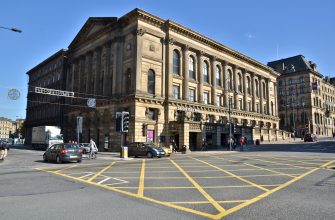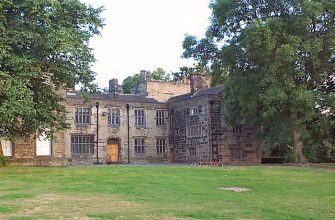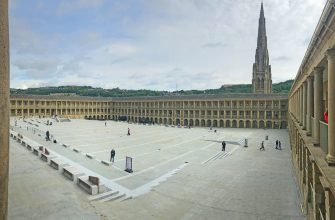Salts Mill, located in Shipley, West Yorkshire, England, is a remarkable testament to the country’s industrial past and a vibrant hub of contemporary culture. Once the heart of the textile industry during the Industrial Revolution, it now houses an impressive art gallery featuring works by the renowned artist David Hockney. Nestled within the UNESCO World Heritage Site of Saltaire Village, this former mill is a significant part of Bradford’s rich history and heritage. Today, it stands as one of Yorkshire’s most popular attractions, drawing visitors from around the world to explore its unique blend of history, art, and culture.
History of Salts Mill
The story of Salts Mill begins in the mid-19th century, during the height of the Industrial Revolution. It was built by Sir Titus Salt, a leading industrialist, who wanted to consolidate his textile operations under one roof. The mill was completed in 1853 and quickly became a cornerstone of the textile industry, producing high-quality alpaca and mohair fabrics. The mill’s success led to the creation of Saltaire Village, a model industrial community designed to provide decent living conditions for the mill’s workers.
Salts Mill as an Art Gallery
After the decline of the textile industry, Salts Mill was repurposed into an art gallery in 1987. The driving force behind this transformation was Jonathan Silver, a local entrepreneur and close friend of David Hockney. The mill now hosts the largest collection of Hockney’s artwork, including his famous Yorkshire landscapes and iPad drawings. The gallery also features works by other artists and hosts regular exhibitions.
Visiting Salts Mill
Visitors to Salts Mill can expect a rich and varied experience. The mill itself is a stunning piece of Victorian architecture, with its imposing red-brick facade and spacious interior. Inside, you can explore the art gallery, browse the bookshop, or enjoy a meal at one of the onsite cafes. The surrounding Saltaire Village, with its well-preserved Victorian houses, parks, and shops, is also worth exploring.
Tours and Admission
Salts Mill is open to the public and admission is free. Guided tours are available, offering insights into the mill’s history, the textile industry, and the artworks on display. It’s recommended to book tours in advance, especially during peak tourist season.
Tips for Tourists
- Wear comfortable shoes as there’s a lot to explore both inside the mill and in Saltaire Village.
- Check the mill’s website for the latest information on exhibitions and events.
- Don’t miss the opportunity to try some local Yorkshire cuisine at the mill’s cafes.
Practical Information
Salts Mill is easily accessible by public transport, with regular train services from Leeds and Bradford. There’s also a large car park for those driving. The mill is wheelchair accessible and has baby changing facilities. Most areas of the mill, including the art gallery, are open seven days a week, but opening hours can vary, so it’s best to check before visiting.
In conclusion, Salts Mill is a must-visit destination for anyone interested in art, history, or the Industrial Revolution. Its unique blend of past and present, industry and culture, makes it one of the most fascinating attractions in West Yorkshire.








